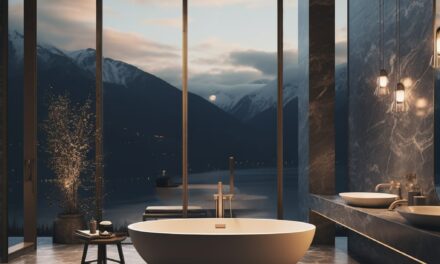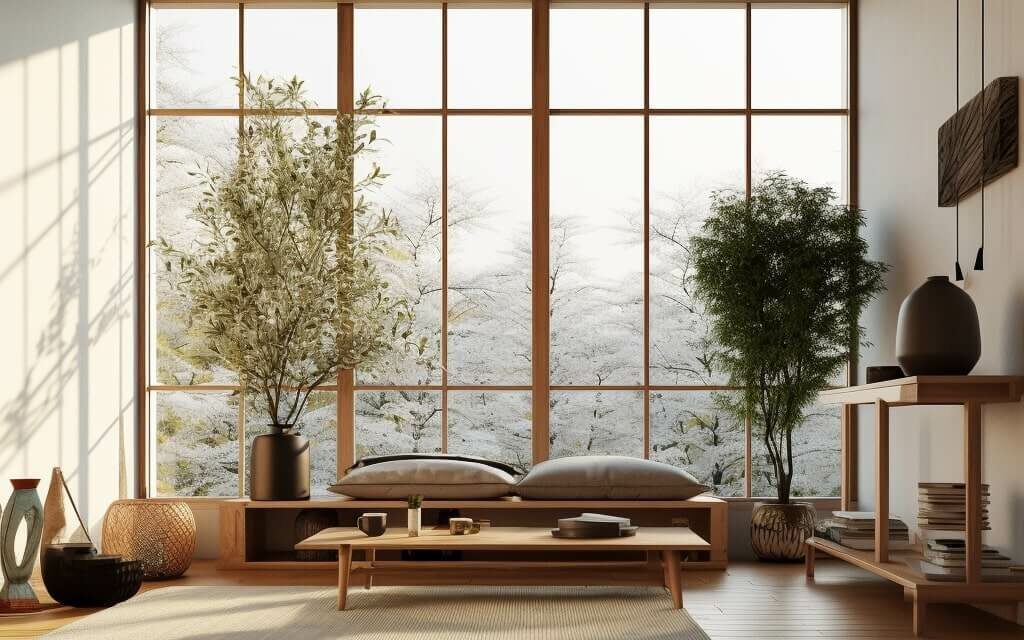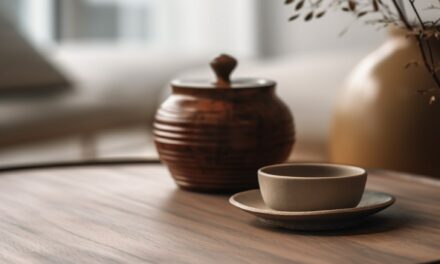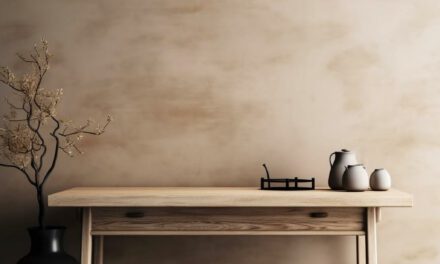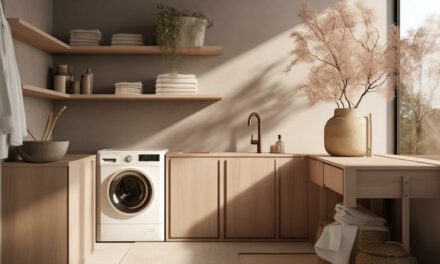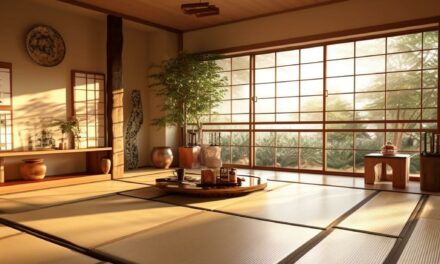As a passionate interior design enthusiast, I’ve spent years exploring different styles.
Recently, I’ve found myself captivated by a unique design aesthetic known as Scandinese design – also known as Japandi.
It’s a blend of minimalist Scandinavian and Zen Japanese styles.
Scandinese offers the perfect balance of tranquility, functionality, and elegance, rooted in a deep appreciation for nature and simplicity.
In this guide, I’m excited to take you through the journey of understanding Scandinese design, its origins, key aspects, and how to incorporate it into your own home.
Whether you’re a seasoned design aficionado or a beginner seeking to transform your living space, join me as we unravel the unique charm and timeless appeal of Scandinese design.
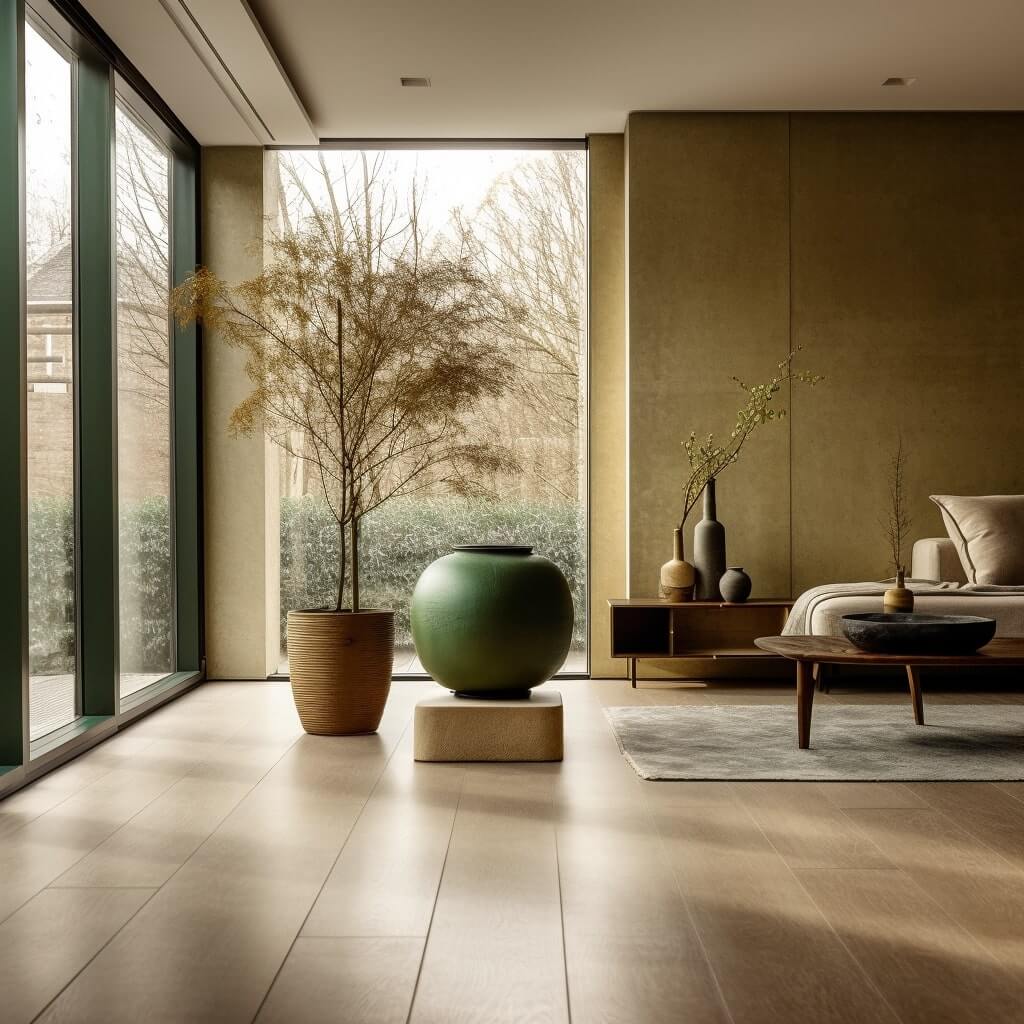
The Origins of Scandinese Design
Have you ever wondered how styles and cultures merge to birth a unique design aesthetic? Let me take you on a quick trip to the roots of Scandinese design.
The Scandinavian Influence
The Scandinavian design principles, hailing from the Nordic countries of Denmark, Norway, Sweden, Iceland, and Finland, are one half of the Scandinese equation.
This style, which emerged mainly in the 1950s, embodied the ethos of creating beautiful, functional spaces accessible to all.
The harsh weather conditions of the region had a significant impact on shaping its design culture.
A shorter daylight duration meant interiors needed to maximize natural light, birthing spaces that were airy, light, and comfortable.
Moreover, Scandinavian design is characterized by clean lines, minimalist decor, a neutral color palette, and the use of natural materials like wood, wool, and leather.
These elements create spaces that are warm, inviting, and functional, exuding a timeless appeal.
But Scandinavian design wasn’t just about the looks; it reflected a lifestyle that appreciated simplicity, functionality, and a connection to the natural world.
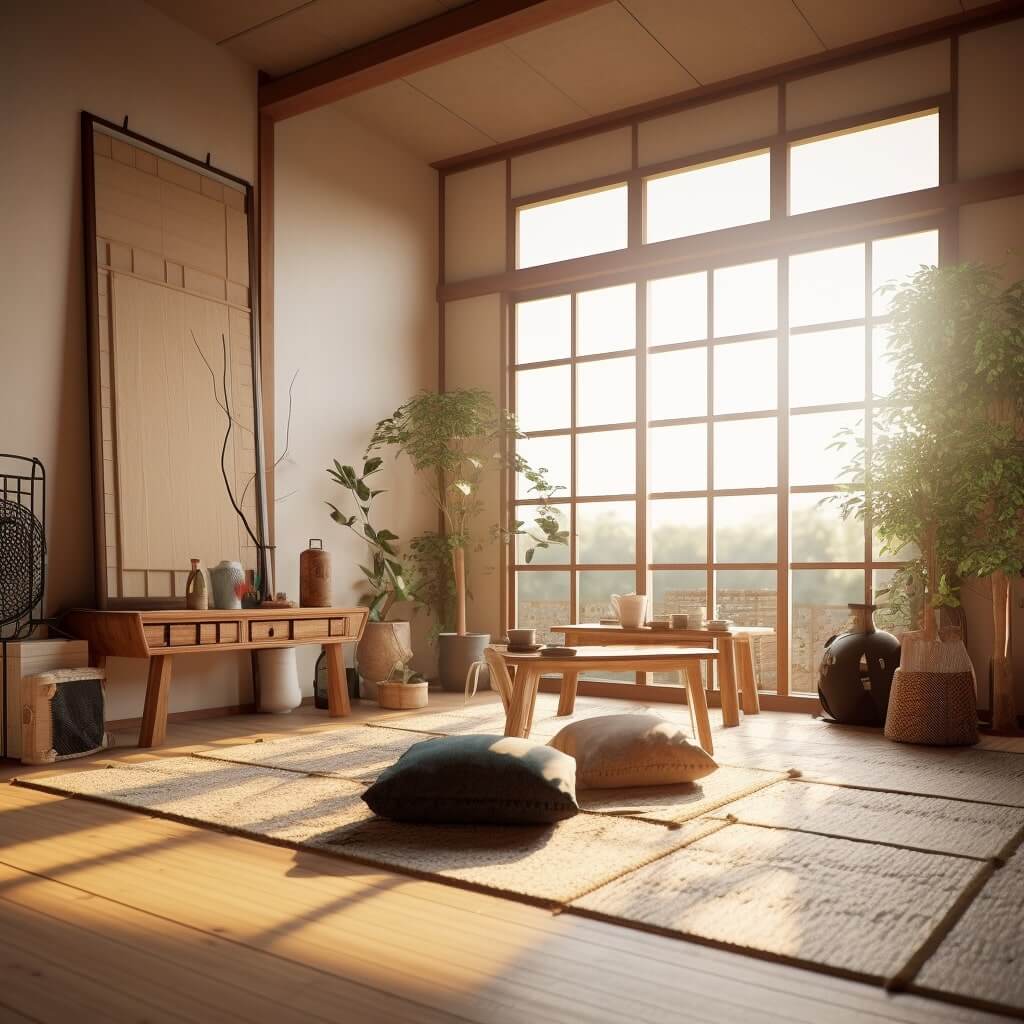
The Japanese (Zen) Influence
Now, let’s take a leap from the frosty Nordic countries to the tranquil landscapes of Japan.
Zen aesthetics, deeply rooted in Buddhism, profoundly influence Japanese design.
They speak of minimalism, simplicity, and the beauty of imperfection, or ‘wabi-sabi’, as it’s called.
Like its Scandinavian counterpart, Japanese design emphasizes natural elements, but with a different lens.
It focuses on the transience and imperfections of nature, appreciating beauty in its most authentic form.
Japanese interiors, often characterized by their minimalist layout and use of negative space, induce a sense of tranquility and harmony.
They invite us to disconnect from the chaotic outside world and connect with our inner selves and nature.
Tatami mats, Shoji screens, and carefully curated items that radiate tranquility are common features of Japanese Zen-inspired interiors.
When the clean-lined simplicity of Scandinavian design met the spiritual tranquility of Japanese Zen aesthetics, Scandinese design was born.
It brought together the best of both worlds, creating a design aesthetic that balances functionality, comfort, simplicity, and an undying love for nature, all bundled up in a calming, tranquil atmosphere.
Stay with me as we delve deeper into what makes Scandinese design a truly unique and appealing style for any home.
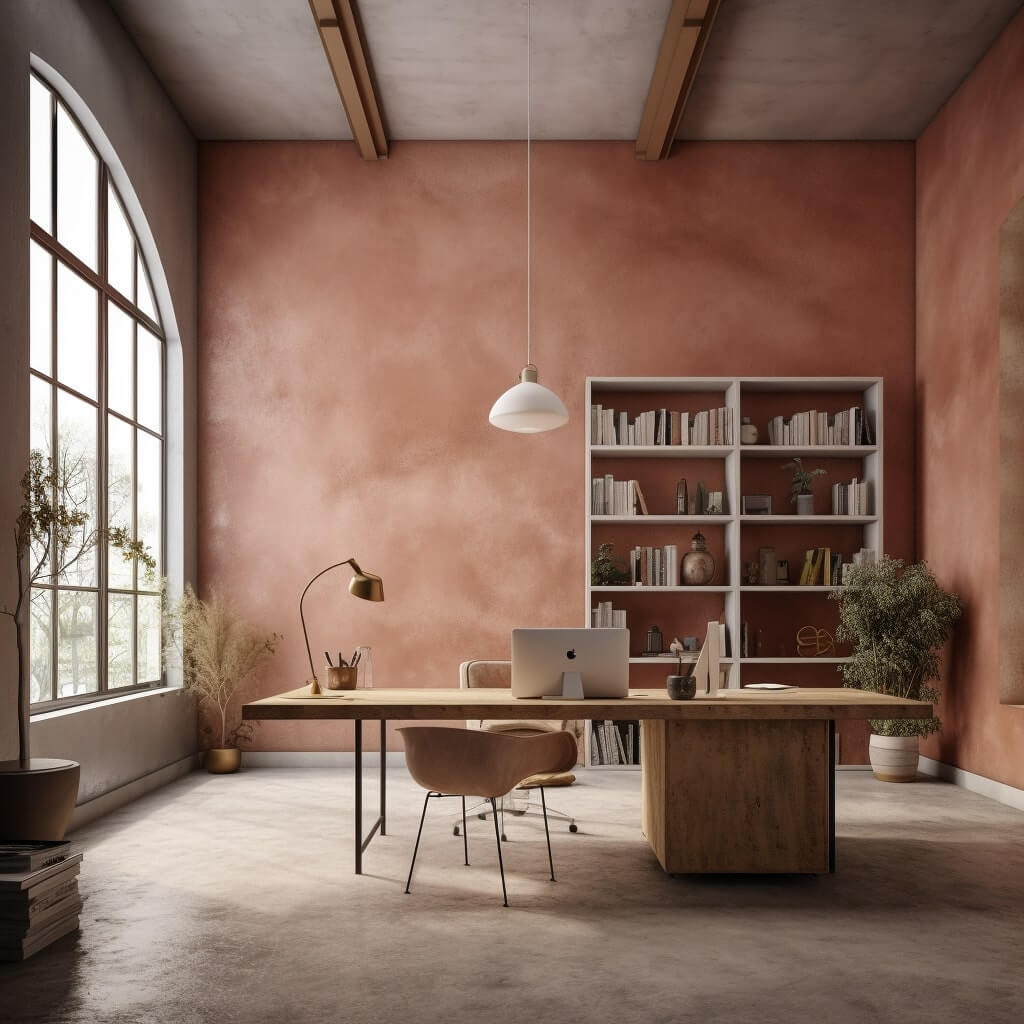
Key Aspects of Scandinese Design
Scandinese design might be a fusion of two distinct styles, but it has an identity of its own. Let’s delve deeper into its key aspects and what makes it stand out.
Essential Over Excess
At the core of Scandinese design lies the philosophy of minimalism: “less is more.”
It’s all about simplifying spaces and keeping only what’s necessary.
This design approach encourages us to declutter our living spaces, and in a way, our lives. Each piece of furniture, every item of decor, serves a purpose.
There’s no room for extravagance or unnecessary elements. The result is a clean, uncluttered space that breathes tranquility and simplicity.
The minimalistic approach isn’t just aesthetically pleasing; it also promotes a lifestyle free from the burdens of material excess.
Organic Materials
If you’ve ever stepped into a Scandinese-styled room, you’ll immediately notice the predominance of natural elements.
Organic materials like wood, stone, bamboo, wool, and cotton are central to this design style.
They provide a connection to the outside world, offering a sense of serenity and balance that synthetic materials can’t achieve.
Whether it’s a bamboo lampshade, a wooden coffee table, or a stone vase, each natural element contributes to the calm, earthy ambiance that Scandinese design is renowned for.
How Design Meets Utility
In Scandinese design, every piece of furniture is not just for show.
It’s selected with the utmost thought given to its purpose and functionality.
The design believes in creating spaces that are not only aesthetically pleasing but also extremely comfortable and user-friendly.
This fusion of beauty and utility manifests in well-designed furniture that supports and enhances our daily activities.
From ergonomically designed chairs to smart storage solutions that save space, Scandinese design champions comfort and convenience.
Lighting and its Impact on Scandinese Ambiance
Lighting is a fundamental component of Scandinese design, mainly influenced by the Scandinavian need to optimize natural light.
The style encourages the use of large windows, light-reflecting colors, and strategically placed mirrors to increase the presence of natural light.
Artificial lighting is also critical, with a focus on warm, ambient lights that create a cozy and inviting atmosphere.
The judicious use of lighting in Scandinese design creates spaces that are not only bright and welcoming but also intimate and soothing.
Scandinese design, with its minimalist, nature-inspired, functional, and well-lit spaces, invites us to experience a tranquil and balanced lifestyle.
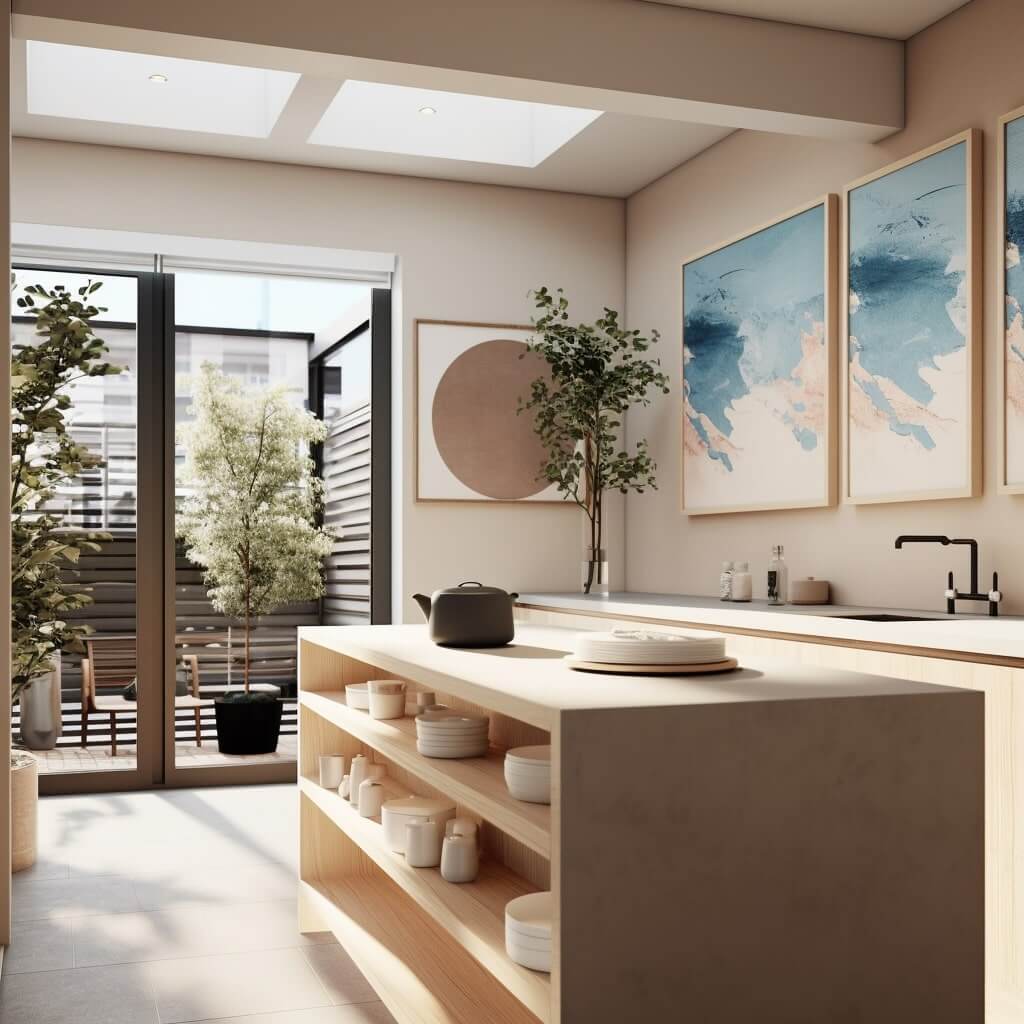
Why Scandinese Design is Resonating Globally
Scandinese design has been capturing hearts far beyond its origins in Scandinavia and Japan. But what makes it a global favorite?
Sustainability and Eco-Friendly Design
In our fast-paced, consumption-driven world, more people are looking for sustainable and eco-friendly options.
Here’s where Scandinese design shines. With its emphasis on natural materials and minimalistic ethos, it encourages a lifestyle that respects the environment.
Furniture and decor items are chosen for their durability and timeless appeal, which reduces the need for frequent replacements.
The use of organic, renewable materials like wood and bamboo also lessens the environmental impact.
It’s a design style that not only beautifies your home but also supports a sustainable planet.
Promoting a Calm and Balanced Lifestyle
The modern world can be overwhelming, full of chaos and noise.
Scandinese design, with its minimalist and nature-inspired aesthetics, offers a refreshing antidote.
Its serene and tranquil spaces promote a calm, balanced lifestyle, giving us a sanctuary where we can relax and recharge.
The tranquility inherent in Scandinese interiors encourages mindfulness and a deeper connection with our surroundings.
In a way, our homes become our personal zen retreats, offering a sense of peace and balance amidst life’s turmoil.
A Solution for Urban Living
As urban living spaces become smaller, optimizing every square foot has become crucial.
Scandinese design, with its minimalist approach and focus on functional comfort, is a perfect solution.
Its smart storage solutions, multi-functional furniture, and emphasis on negative space create an illusion of spaciousness, making even the smallest areas feel open and comfortable.
Scandinese design proves that size doesn’t limit style and comfort; it’s all about how you use the space.
Elegance and Timelessness
Scandinese design is a celebration of elegance and timelessness.
Its clean lines, natural materials, and neutral color palette create spaces that are classy and sophisticated.
Unlike some design trends that come and go, Scandinese design has a timeless appeal. The focus on quality, durability, and functionality ensures that your interiors remain stylish and relevant for years to come.
It’s a design style that matures beautifully with time, just like a fine wine.
As you can see, the global resonance of Scandinese design lies in its ability to intertwine sustainability, tranquility, functionality, and timeless elegance.
No matter where you live, this design style can transform your home into a serene sanctuary that nurtures your wellbeing and reflects your respect for nature. Join me as we explore how to apply Scandinese design in different rooms of your home.
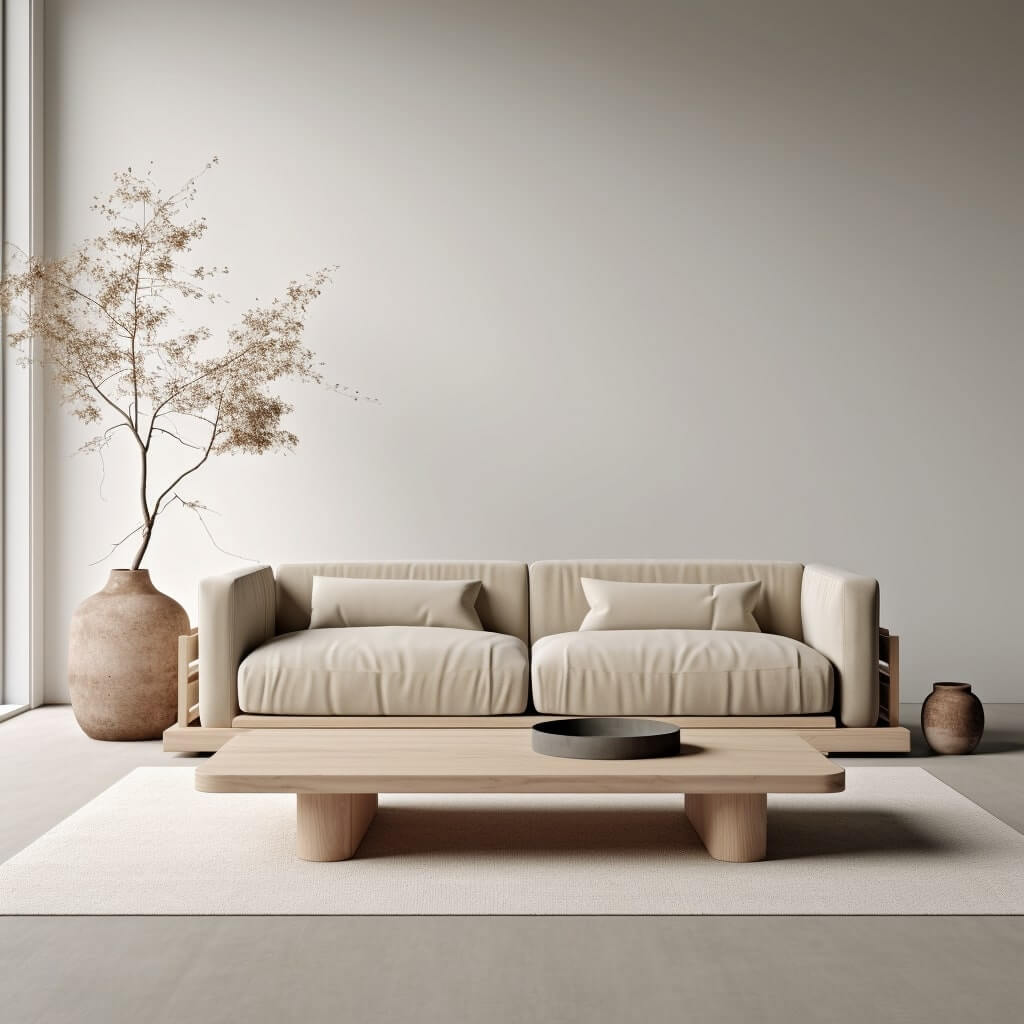
Scandinese Furniture for Every Room
Let’s explore how to create that serene, functional ambiance in every room.
Scandinese Design in the Living Room
The living room is where we welcome guests, enjoy family time, or simply unwind.
In Scandinese design, a minimalist yet comfortable sofa, preferably in neutral shades, takes center stage.
Pair it with a wooden coffee table and add a few nature-inspired decor pieces. Opt for lighting that creates a warm, welcoming ambiance.
Scandinese Design in the Kitchen
Scandinese kitchens combine functionality with a serene aesthetic.
Think bamboo cutting boards, stone countertops, and wooden cabinets. Optimize storage to keep the counters clutter-free.
Pendant lights over the kitchen island or dining table enhance the space’s warmth.
Scandinese Design in the Bedroom
Our bedrooms should be our personal sanctuaries, and Scandinese design can help create that. Opt for a simple, sturdy bed made from natural materials.
Use soft, organic linen in neutral shades. Keep decor to a minimum – perhaps a single artwork or a small indoor plant.
Scandinese Design in the Bathroom
In the bathroom, aim for a clean, uncluttered space. Use storage solutions that hide away toiletries.
Natural elements can come in the form of wooden stools or stone basins. A bamboo bath mat or a potted plant can complete the look.
Scandinese Design in the Home Office
Finally, for your home office, functionality is crucial. Choose a desk and chair that prioritize ergonomics without sacrificing aesthetic appeal.
Keep the workspace clutter-free, perhaps with minimalist shelving. Incorporate greenery to promote a calm working atmosphere.
Scandinese Design Tips for Beginners
Here are some tips to guide you on recreating this style at home:
Choosing the Right Materials and Textures
Begin by selecting natural materials that echo the simplicity and warmth of Scandinese design.
Opt for wooden furniture with clean lines, and add texture with wool or cotton rugs.
Stone, bamboo, and ceramics can also be incorporated in the form of decor items. Remember, it’s all about creating a tactile, nature-inspired space.
Selecting Color Schemes
In Scandinese design, color palettes are often understated, drawing heavily from nature.
Think soft whites, warm greys, earthy browns, and muted greens.
These tones set a calm, soothing backdrop for your space.
For an accent color, consider a subdued shade like indigo or terracotta, but use sparingly.
Integrating Natural Elements
Natural elements are a cornerstone of Scandinese design. Indoor plants not only bring a piece of nature indoors but also purify the air.
They add a refreshing pop of green that enhances the overall tranquility of the space.
Choose plants that are easy to care for and fit well with your room’s lighting conditions.
Balancing Negative Space: Less is More
In Scandinese design, negative space is as important as the objects that occupy a room. Instead of filling every corner, allow some areas to breathe.
This mindful use of space creates an airy, uncluttered environment that evokes a sense of peace and openness.
It’s a reminder that in design, and perhaps in life, less can indeed be more.
FAQs
Where to Buy Scandinese Furniture?
Scandinese furniture is available at many online and physical retailers globally. Key players include IKEA, Muji, or more boutique outlets like Danish Design Co and Noden. Always remember to verify the sustainability and quality of the products.
How to Maintain Scandinese Furniture?
Scandinese furniture, usually made from natural materials, requires regular dusting and occasional polishing. Avoid harsh chemicals and instead opt for mild, eco-friendly cleaning agents. For upholstery, consider professional cleaning services annually.
Can Scandinese Design Work in any Home?
Absolutely! Scandinese design’s simplicity, focus on functionality, and love for natural elements make it versatile enough to suit any home, regardless of size or location.
What is Traditional Scandinavian Design?
Traditional Scandinavian design is a style originating from Nordic countries. It prioritizes functionality, simplicity, and a connection to nature, featuring clean lines, minimal decor, and a palette of neutral and cool colors.
What are the Elements of Scandinavian Design?
Key elements of Scandinavian design include clean lines, functionality, minimalism, and the extensive use of natural materials like wood and stone. It also emphasizes a light color palette and plenty of natural light.
What is the Difference Between Scandi and Japandi?
While both styles value minimalism and nature, Scandi design leans towards a cozy, warm atmosphere with more use of colors, while Japandi (or Scandinese) design blends this with the Japanese Zen aesthetics of wabi-sabi, promoting tranquility and a deeper spiritual connection with nature.
What is Japandi Design?
Japandi design, also known as Scandinese, is a hybrid style that blends the minimalism and functionality of Scandinavian design with the rustic elegance, tranquility, and spiritual elements of Japanese (Zen) design. It celebrates simplicity, natural elements, and a mindful, balanced lifestyle.


